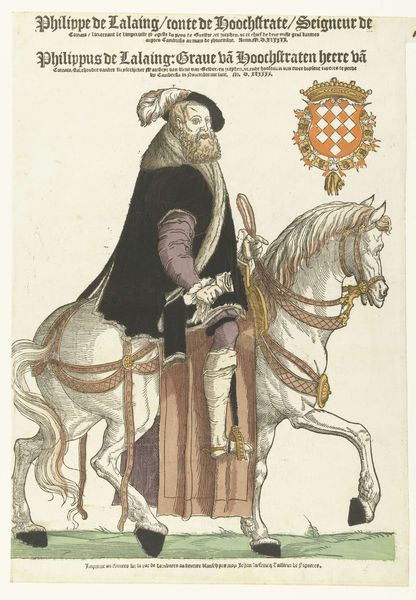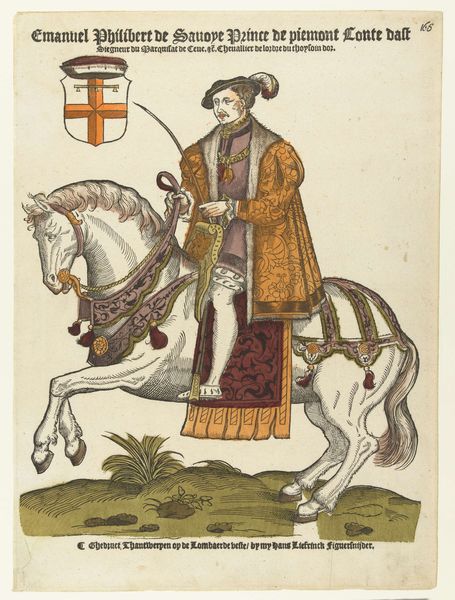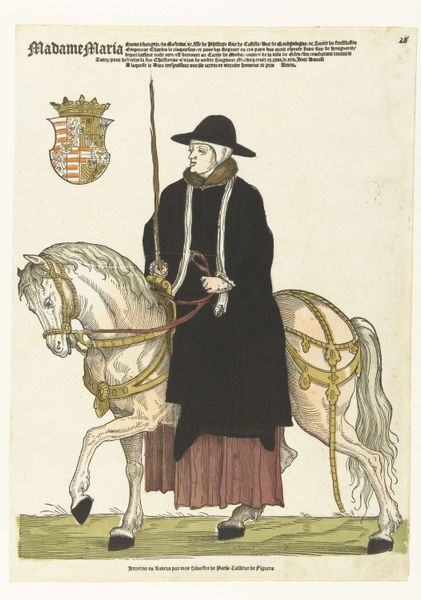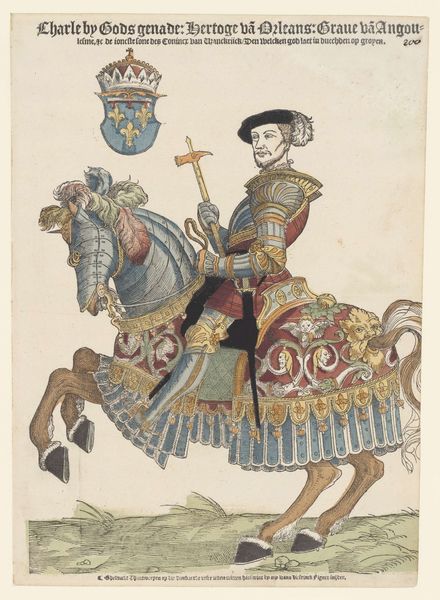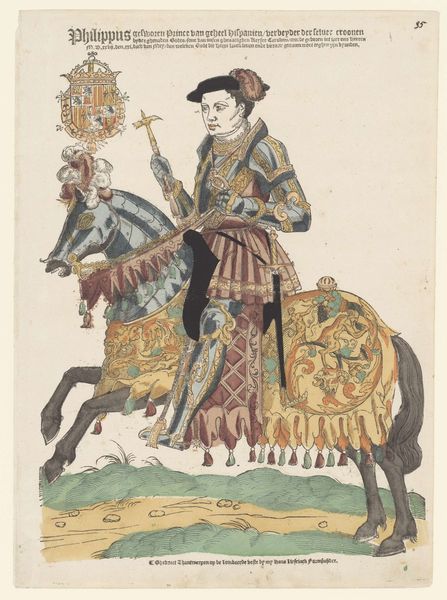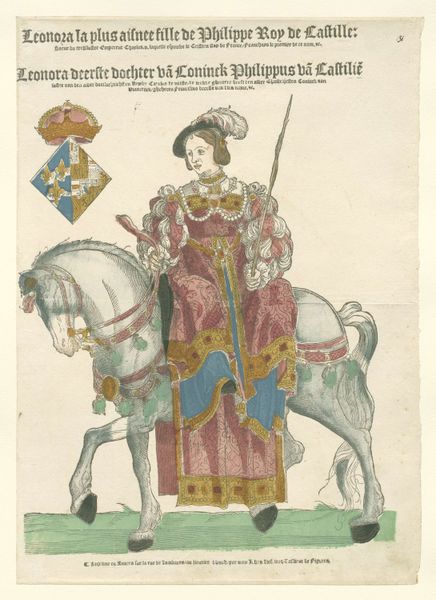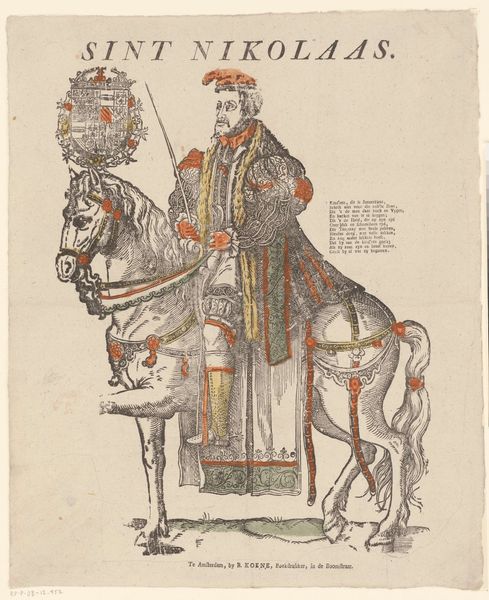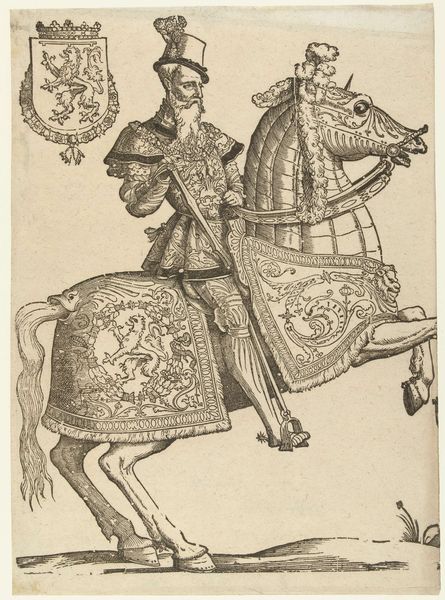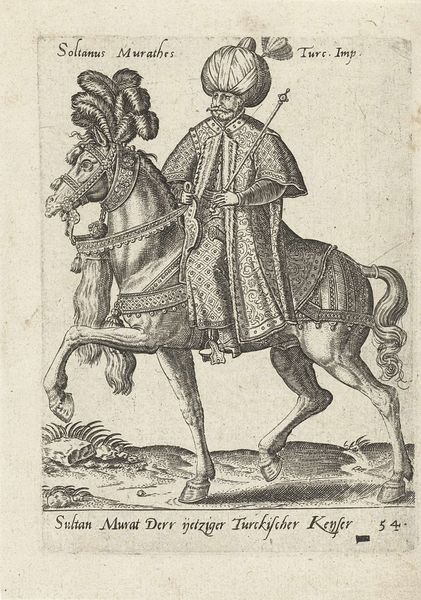
Portret van hertog Willem van Kleef, Gulik en Berg, graaf van Mark, heer van Ravenstein te paard after 1546
0:00
0:00
mixed-media, print, etching, engraving
#
portrait
#
mixed-media
# print
#
etching
#
mannerism
#
figuration
#
11_renaissance
#
line
#
history-painting
#
engraving
Dimensions: height 405 mm, width 298 mm
Copyright: Rijks Museum: Open Domain
This portrait of Duke William of Cleves, Jülich and Berg was made by Cornelis Anthonisz. It’s printed on paper using woodcut techniques, with added color. The material itself - paper - is key to understanding the image. The relatively low cost of paper meant that images like this could circulate widely, disseminating the Duke’s image and authority. The woodcut process, while requiring skill, was also relatively quick and efficient, and a print could be replicated many times. The addition of color by hand adds another layer of value and labor to the print, making it more visually striking and appealing to potential buyers. These processes speak to a burgeoning market for images in the 16th century, where the desire for representation and the mechanics of production came together. Considering this context, it’s clear that this portrait isn’t just a representation of power, it’s a product of its time, shaped by the possibilities and limitations of the materials and making processes used to create it.
Comments
No comments
Be the first to comment and join the conversation on the ultimate creative platform.
